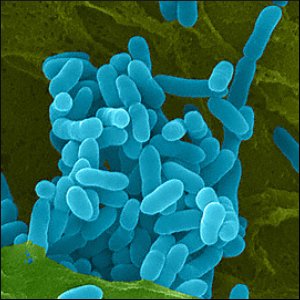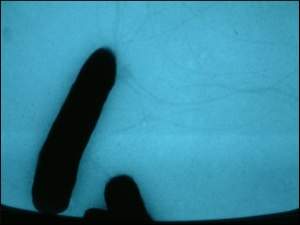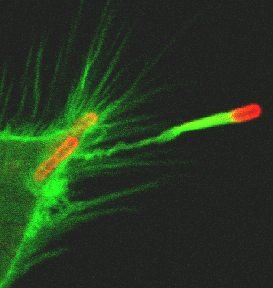Getting a Grip on the Great Mimicker

For a doctor it is all about signs – the clues to a disease lie in how the patient feels, where it hurts and what is affected. For many diseases, diagnosis can be swift and sure.
But what happens when we are infected by an organism that can strike anywhere, at any time and cause almost any symptom? Diagnosis is denied.
Living amongst the roots of tropical plants is a soil bacterium with the unwieldy name Burkholderia pseudomallei – or often ‘The Great Mimicker’. This organism can cause blood disease, abscesses, lung disease, kidney disease, heart disease and more. In some areas of the world, half of teenagers with blood infections die. Sometimes it lays dormant for years before striking.
The disease is called melioidosis and this week researchers from The Wellcome Trust Sanger Institute and colleagues in Thailand, Australia and the US report the analysis of the genome of Burkholderia pseudomallei in the journal Proceedings of the National Academy of Sciences USA.
Remarkably, it has two large chromosomes (most bacteria have one) and the two have broadly different roles. The larger contains genes for most of the ‘housekeeping’ work of the cell, whereas the smaller contains genes that allow B. pseudomallei to adapt and survive.
“This research emphasises the diversity and adaptability of bacteria. Human beings are merely one of the diverse niches in which this remarkable organism can thrive.”
Dr Julian Parkhill Project manager at the Sanger Institute

Melioidosis is one of the emerging infectious diseases – part of our never-ending struggle to deal with bacteria that acquire new weapons to infect humans. For B. pseudomallei, the genome structure shows that both chromosomes have acquired whole new regions of DNA (genomic ‘islands’), gaining new sets of genes to help the organism to live in humans and other environments. And, with double the amount of DNA in a ‘typical’ bacterium, B. pseudomallei is one of the most adaptable.
“B. pseudomallei is a formidable pathogen, with a genome to match. The size and ability to acquire new genes ensures that is well equipped for action, what ever the conditions.”
Dr Matthew Holden Who headed the analysis of the B. pseudomallei genome
As well as being an emerging organism, B. pseudomallei has been listed as a potential bioweapon, because of its potential to cause disease after inhalation. The most common route of infection, however, is through open wounds or abrasions from contaminated soils. The organism can also infect many other animals including sheep, pigs, cattle and birds.
With the genome sequence to hand, new methods can be developed to detect and diagnose the infection, as well as to investigate possible targets for new vaccines. B. pseudomallei is intrinsically resistant to many antibiotics and treatment normally relies on a combination of antibiotics over more than one month.
More information

About melioidosis
- The causative organism of melioidosis was first described in Burma in 1911 by the British pathologist Captain A. Whitmore: the disease was originally called Whitmore disease.
- Melioidosis is a serious disease of humans and animals that occurs primarily in SE Asia, N Australia and other tropical areas. It is thought that 10-25 per cent of people in endemic areas may be infected but remain asymptomatic. There is no licensed vaccine, and the bacterium is resistant to many antibiotics.
- The bacterium is a soil-dwelling organism and usually infects humans through open wounds or abrasions through contact with contaminated soil. It can also infect a wide range of animals.
- Infection is particularly severe in people whose immune system is impaired, such as those with other diseases (diabetes, lung disease). About 40-50 per cent of those with septicaemia die.
- The organism can lie dormant for decades and only cause overt symptoms when the person infected is weakened. An estimated 225,000 Vietnam veterans are positive for signs of melioidosis.
Websites
- Tropical Medicine Central Resource (US)
- Health Protection Agency (UK)
- Centers for Disease Control (US)
Participating Centres
- https://www.sanger.ac.uk/
- https://www.gov.uk/government/organisations/defence-science-and-technology-laboratory
- https://www.lshtm.ac.uk/research/faculties/itd
- http://www.tm.mahidol.ac.th/
- http://www.griffith.edu.au/school/hsc/
- http://www.imperial.ac.uk/cmmi/
- http://www.usamriid.army.mil/
- http://www.si.mahidol.ac.th/eng/
- http://www.hpa.org.uk/srmd/div_nsi_lhcai/index.htm
- https://www.tropicalmedicine.ox.ac.uk/
Publications:
Selected websites
The Wellcome Trust Sanger Institute
The Wellcome Trust Sanger Institute, which receives the majority of its funding from the Wellcome Trust, was founded in 1992. The Institute is responsible for the completion of the sequence of approximately one-third of the human genome as well as genomes of model organisms and more than 90 pathogen genomes. In October 2006, new funding was awarded by the Wellcome Trust to exploit the wealth of genome data now available to answer important questions about health and disease.
The Wellcome Trust and Its Founder
The Wellcome Trust is the most diverse biomedical research charity in the world, spending about £450 million every year both in the UK and internationally to support and promote research that will improve the health of humans and animals. The Trust was established under the will of Sir Henry Wellcome, and is funded from a private endowment, which is managed with long-term stability and growth in mind.


